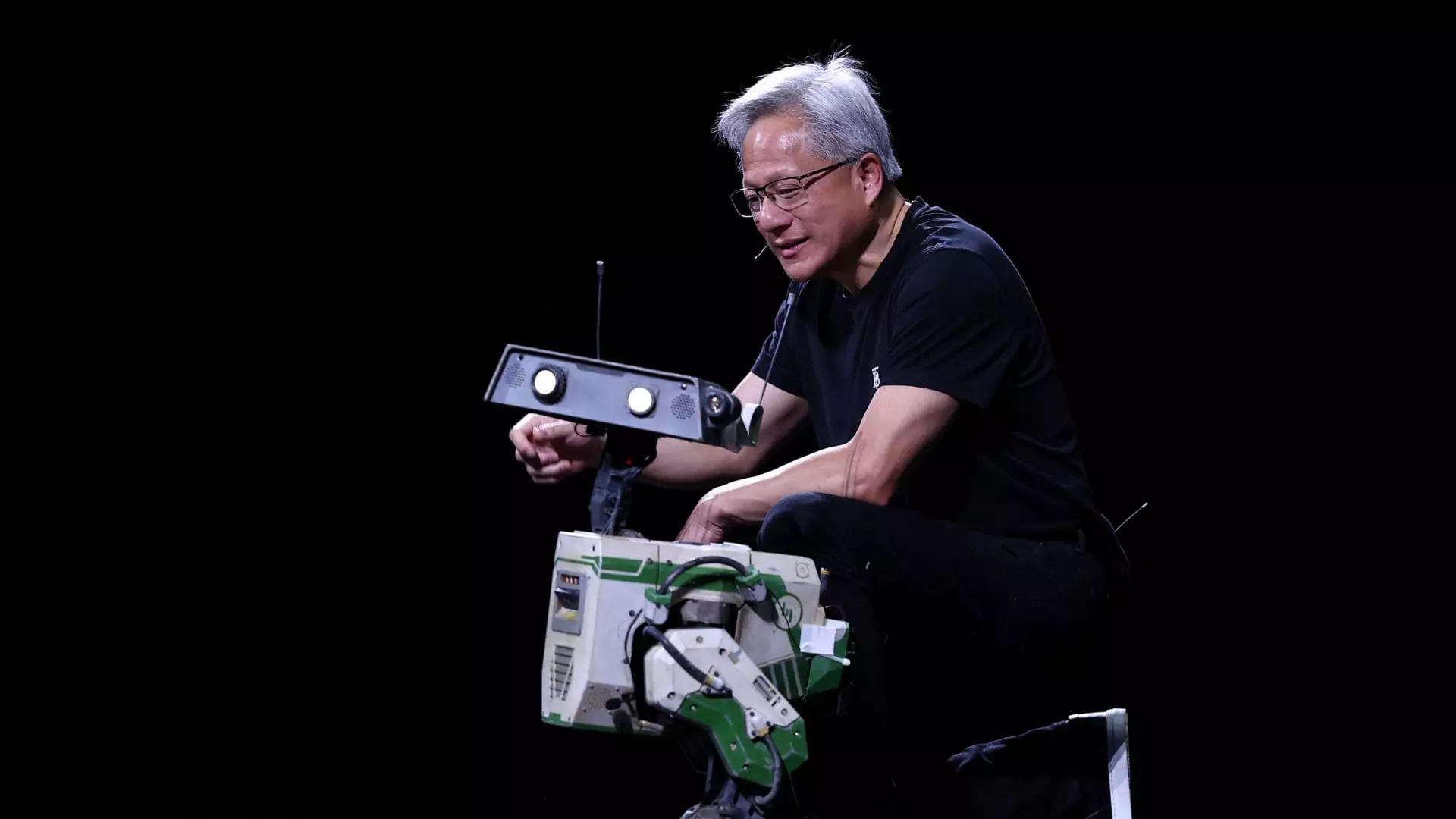Nvidia is no ordinary chipmaker. Under the dynamic leadership of CEO Jensen Huang, the company has soared to new heights, driven by innovation, particularly in the realms of artificial intelligence (AI) and robotics. Huang’s insights during Nvidia’s recent annual shareholders meeting highlight not just the potential of these sectors, but a paradigm shift in how the company conceptualizes its identity and roadmap moving forward. With AI dominating the conversation, it’s essential to shine a light on robotics—a domain he describes as brimming with multitrillion-dollar opportunities.
This emphasis on robotics, while currently generating a modest revenue stream of approximately $567 million—or about 1% of total sales—indicates just how nascent this market is for Nvidia. The business unit’s meteoric growth of 72% year-on-year is nothing short of impressive. However, it underscores a larger phenomenon in today’s tech landscape: industries are evolving exponentially in response to new capabilities and demands. Robots, once relegated to industrial assembly lines, are on the cusp of becoming pervasive in individual households and urban landscapes alike.
Self-Driving Cars: The Launchpad
The promise of self-driving technology serves as a significant catalyst for Nvidia’s robotics ambitions. Huang asserted that autonomous vehicles would emerge as the first major commercial application powered by this technological leap. This assertion places Nvidia at a critical intersection of consumer technology and advanced automation, suggesting that we are moving closer to a future where cars are not merely functional but are intelligent companions on our roads.
Nvidia’s Drive platform exemplifies this ambition, echoing its ethos of merging hardware and software into a cohesive, synergistic system. High-profile partnerships, such as the collaboration with Mercedes-Benz, affirm the credibility and market viability of Nvidia’s proposals. In a landscape where competition is fierce, these alliances are not just strategic; they are essential. The automotive industry, notoriously conservative, is finally recognizing the indispensable role that robust AI and powerful processing capabilities play in redefining transportation.
Envisioning a Robotic Future
Huang’s ambitious vision transcends automotive applications; he envisions a world populated by billions of robots and hundreds of thousands of robotic factories, all underpinned by Nvidia’s groundbreaking technology. This perspective is audacious, but it’s also necessary. The world is witnessing unprecedented changes in labor and productivity, driven by innovations in AI and robotics. Organizations that fail to adapt may find themselves left behind as competitors harness the power of these technologies to revolutionize workflows, manufacturing, and service delivery.
To facilitate this transition, Nvidia is not only providing superior chips but is evolving into an all-encompassing “AI infrastructure” provider. This transformation reflects a significant shift away from the traditional identity of chipmaking toward a holistic approach that integrates cloud services, advanced software, and networking capabilities. This evolution is crucial; companies that prioritize a diversified technological offering will inevitably lead the charge in the upcoming AI-driven revolution.
The Path Ahead: Strategic Growth and Shareholder Confidence
During the shareholders meeting, the approval of the executive compensation plan and the reelection of board members highlighted the confidence that shareholders have in Huang’s leadership and strategic direction. This reflects a robust belief in the long-term vision not only for AI but for robotics as well. As Nvidia positions itself at the forefront of these industries, stakeholders can reasonably expect exciting developments on the horizon.
Moreover, as Nvidia’s revenues orbits toward an anticipated near $200 billion, the company’s market cap, recently soaring to a staggering $3.75 trillion, speaks volumes about its perceived value and future growth trajectory. This financial muscle will invariably empower Nvidia to invest vigorously in research and development, securing its place at the epicenter of the robotics renaissance.
In an age characterized by rapid technological advancement, the mettle of organizations like Nvidia will be tested. But under Huang’s leadership, it is clear that the company is not just content to ride the wave of AI and robotics; it aims to be the tidal force that propels innovation, changing how we live, work, and interact with technology. Indeed, we stand on the brink of a new era—the question remains, are we ready to embrace it?


Leave a Reply